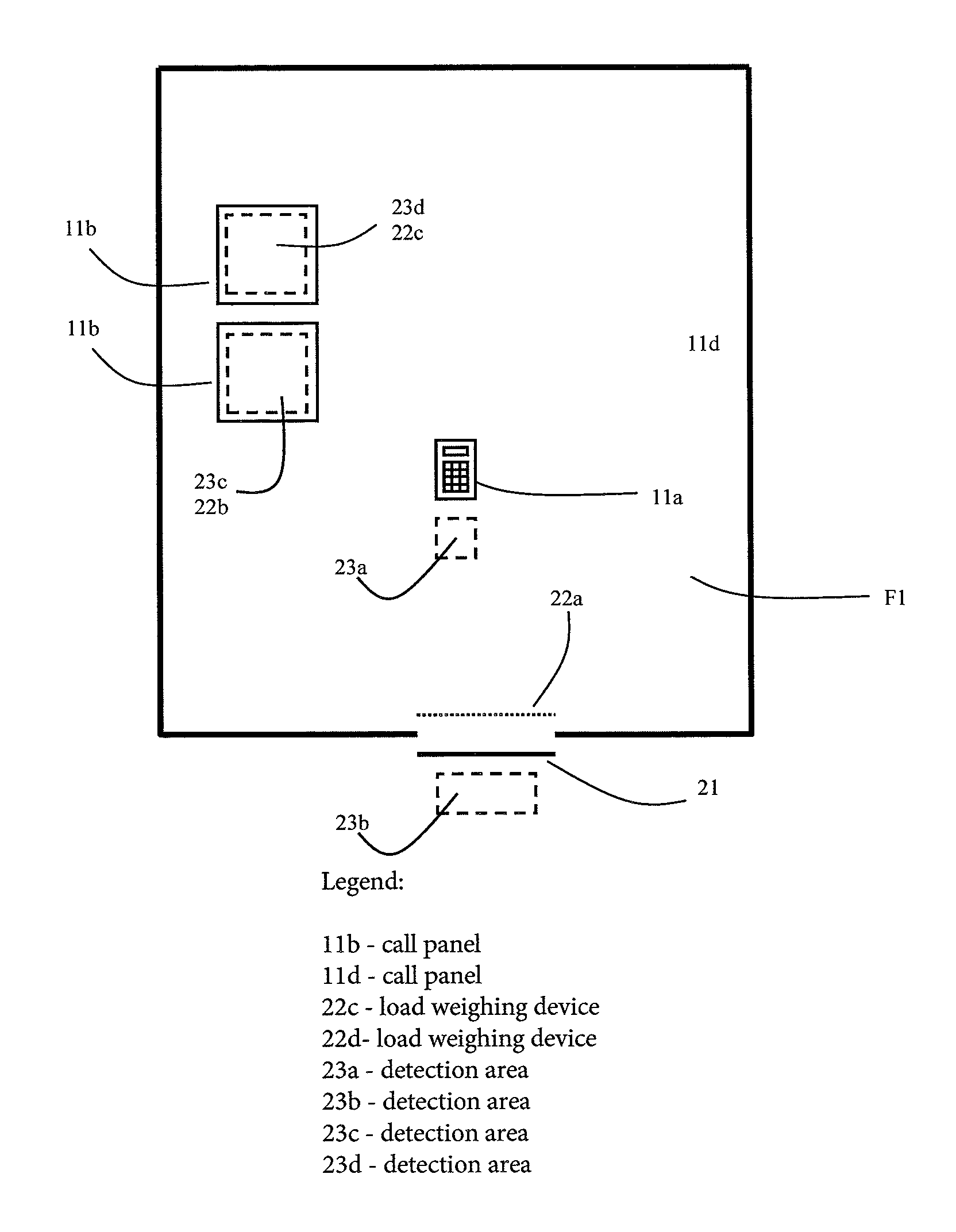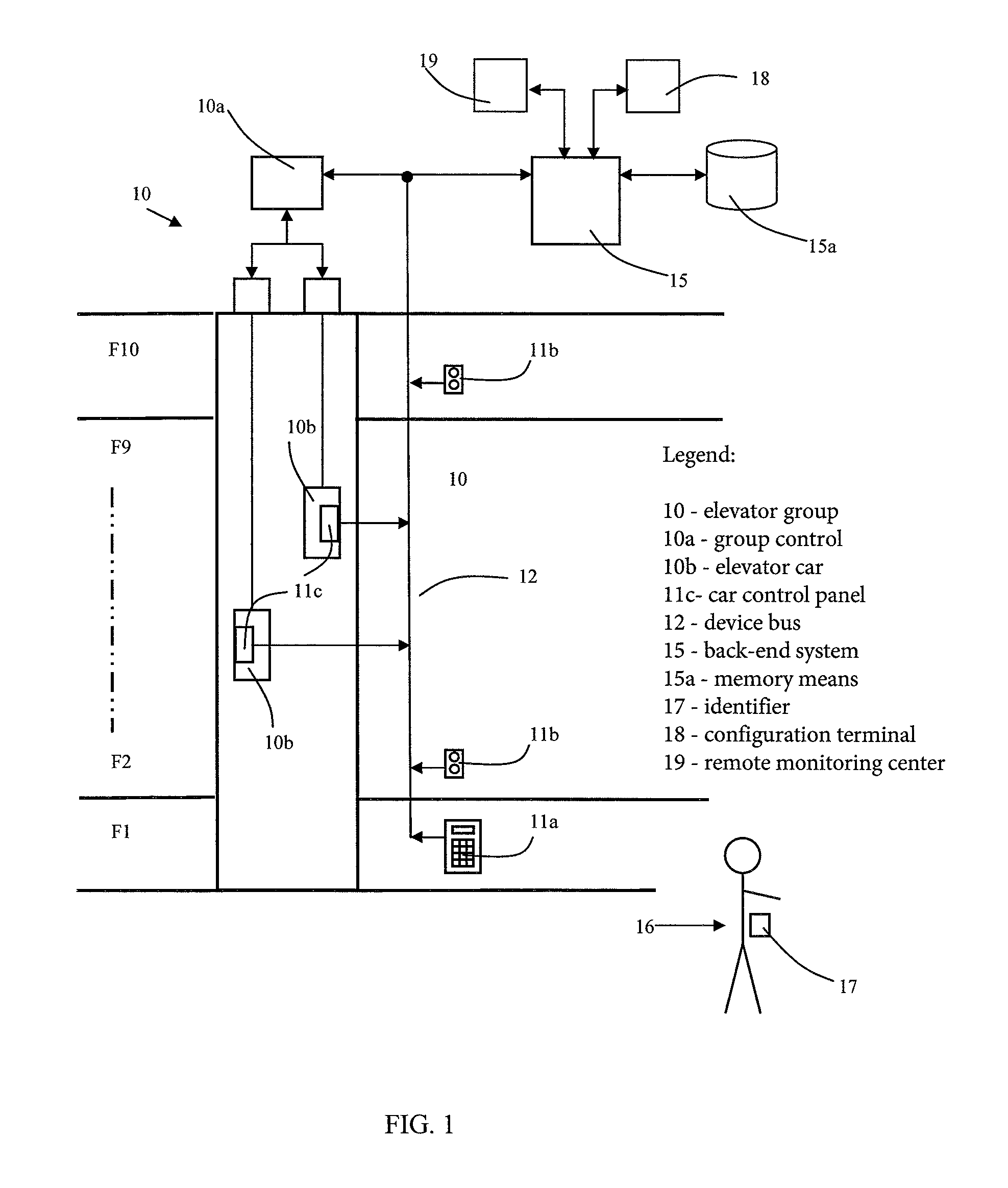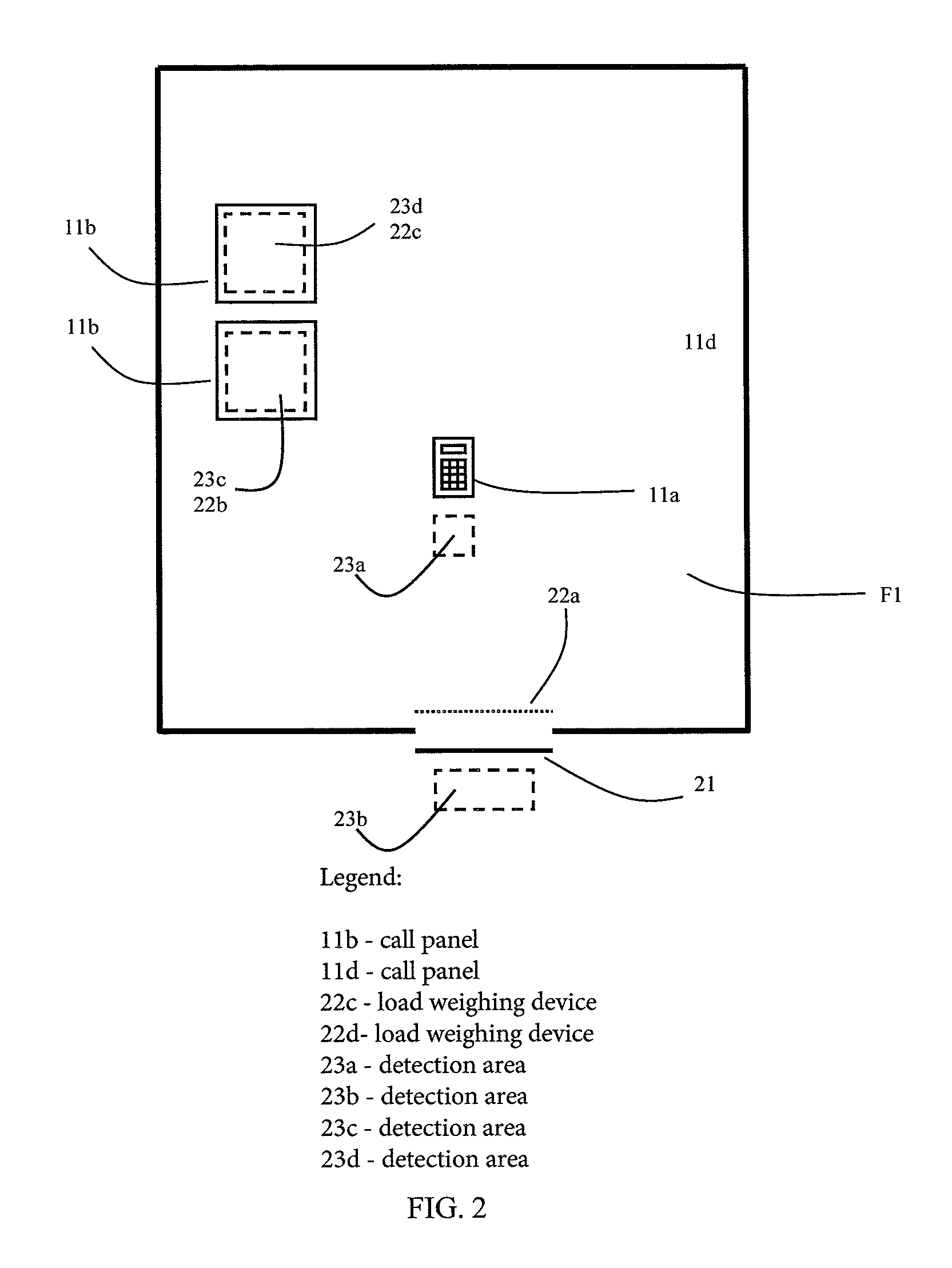Conveying system having a detection area
a detection area and conveying system technology, applied in the field of conveying systems, can solve the problems of slow system, erroneous elevator call or other service request registration, unreliable system based on bio-identification, etc., and achieve the effect of facilitating and speeding up the arrival of passengers, avoiding erroneous or accidental call registration, and easy integration into connection
- Summary
- Abstract
- Description
- Claims
- Application Information
AI Technical Summary
Benefits of technology
Problems solved by technology
Method used
Image
Examples
Embodiment Construction
[0023]FIG. 1 presents one conveying system according to the invention, wherein an elevator group 10 serves the floors F1-F10 of a building. The elevator group comprises two elevators, up / down call pushbuttons 11b on the floors F2-F10 for calling an elevator car 10b to a call floor, a destination call panel 11a for giving destination calls in the entrance lobby floor F1, and car command panels 11c for giving car commands in the elevator cars 10b. The call panels 11 (11a-11d) that function as the user interfaces of an elevator group are connected to a device bus 12, via which the back-end system 15, the group control 10a of the elevator group and the call panels 11 can transmit data to each other. The device bus 12 can be any data transfer bus whatsoever suited to the purpose, e.g. a wireless local area network. The group control 10a and the back-end system 15 form the control system of the conveying system.
[0024]The back-end system 15 comprises a processor unit, application software ...
PUM
 Login to View More
Login to View More Abstract
Description
Claims
Application Information
 Login to View More
Login to View More - R&D
- Intellectual Property
- Life Sciences
- Materials
- Tech Scout
- Unparalleled Data Quality
- Higher Quality Content
- 60% Fewer Hallucinations
Browse by: Latest US Patents, China's latest patents, Technical Efficacy Thesaurus, Application Domain, Technology Topic, Popular Technical Reports.
© 2025 PatSnap. All rights reserved.Legal|Privacy policy|Modern Slavery Act Transparency Statement|Sitemap|About US| Contact US: help@patsnap.com



